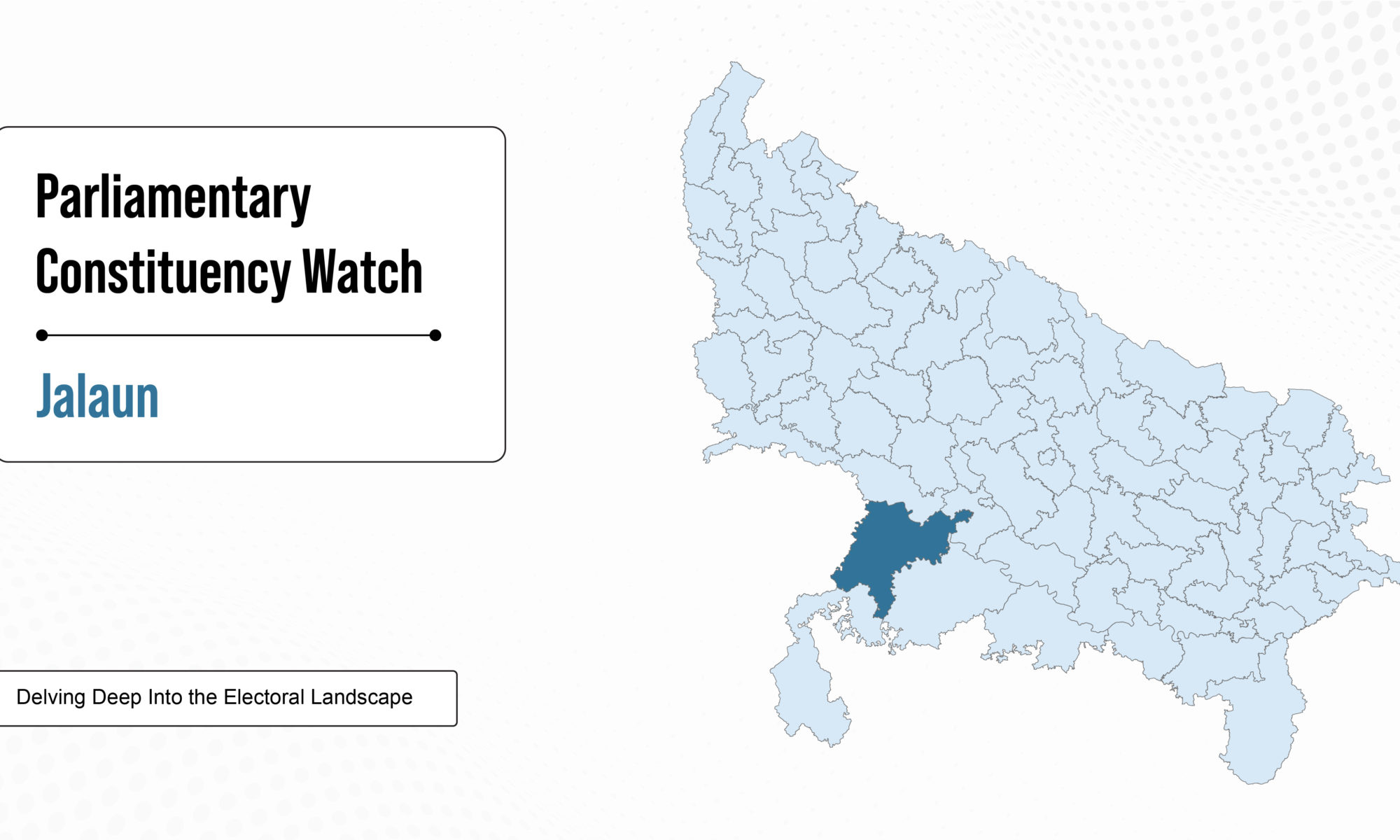Location
Jalaun Lok Sabha constituency is one of the 80 Lok Sabha constituencies in the Indian state of Uttar Pradesh. It comprises 5 assembly constituencies and 3 districts.
Category
Designated as a Scheduled Caste Constituency.
Voter Turnout
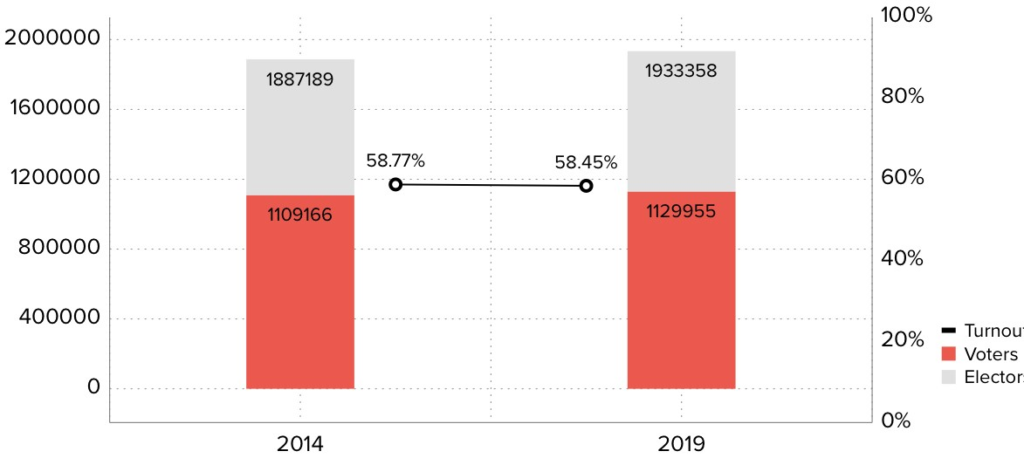
Jalaun Electoral Turnout Rates
During the 2014 elections, the total number of electors was 18,87,189 and the turnout stood at 58.77%, in real numbers- 11,09,166 voters. 2019 witnessed a turnout decrease; out of the 19,33,358 electors, 58.45% of voters exercised their constitutional rights. In real numbers- 11,29,955 voters.
Representation and Results
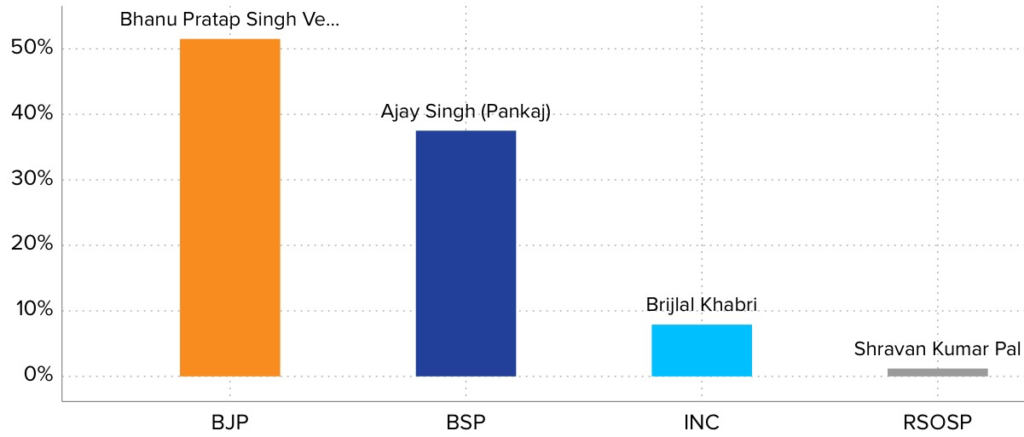
Party Wise Vote Share
2019’s parliamentary election winner, BJP’s Bhanu Pratap Singh gained a vote share of 51.50% and defeated BSP’s Ajay Singh whose vote share stood at 37.50%. The other prominent candidates in the fray were INC’s Brijlal Khabri with 7.90% of vote share and RSOSP’s Shravan Kumar Pal with 1.20%.
Voting History –2014 & 2019
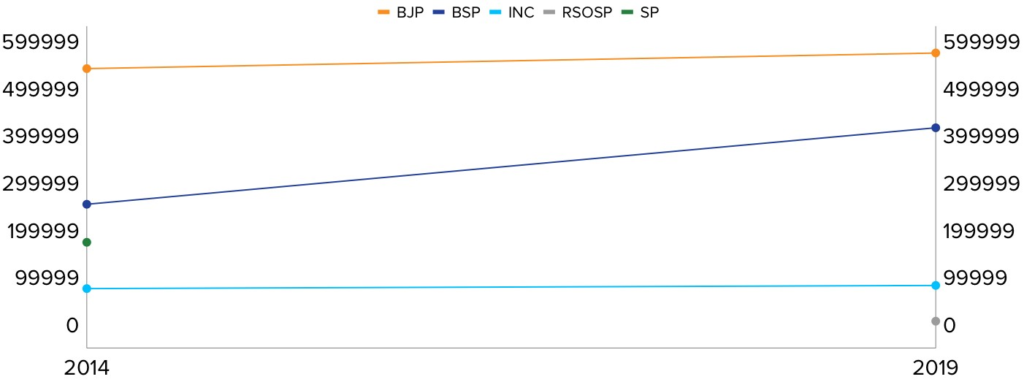
Party Wise Shift in Votes
In 2014, BJP won the constituency and earned 5,48,631 votes followed by 5,81,763 votes in the 2019 election victory. On the other hand, BSP garnered 2,61,429 votes in 2014 and 4,23,386 votes in the 2019 elections. INC got 82,903 votes in 2014 and 89,606 votes in 2019.
Parties at helm through the years
The Jalaun constituency has been represented by a number of different parties over the years.
The Indian National Congress (INC) held sway in the first elections in 1962 and continued to maintain its grip in the subsequent years of 1967 and 1971. The 1977 elections brought the Janata Party (JP) to power, albeit briefly. The INC made a comeback in 1980 and remained in control until 1989 when the Janata Dal (JD) took over.

Timeline of Winning Parties
The early 1990s marked the ascent of the Bharatiya Janata Party (BJP), which held power in 1991, 1996, and 1998. In an unexpected turn, the Bahujan Samaj Party (BSP) secured power in 1999. The BJP returned to dominance in 2004, followed by the Samajwadi Party (SP) in 2009. Since 2014, the BJP has held a firm grip on Indian politics, maintaining its dominance through the 2019 elections.
Party-wise success rate
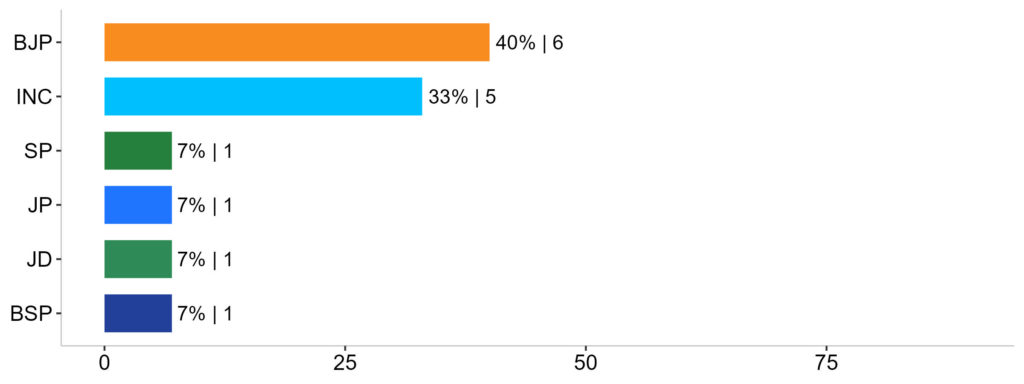

Success Rate
In terms of the success rate in securing the Jalaun Lok Sabha seat, BJP had exhibited the highest rate of success over the years, standing at 40% followed by INC with 33%. Among other prominent parties, both BSP and JD enjoyed a success rate of 7% each.
Gender Wise Distribution of Contestants


Gender Wise Distribution of Candidates
During the 2009 elections, there were 16 contestants and 14 of them were male and 2 females, in percentage- 88% and & 12%. In 2014, the total number of candidates dropped to 11, and there were no female contestants.
In 2019, on the other hand, the total number of contestants further decreased to a mere 5 and, like in prior elections, the participation remained limited to males.
Gender wise voter turnout
In 2009, out of a total of 16,83,712 electors, 7,97,630 voters cast their ballots. Of the 9,22,017 male electors, 4,81,017 participated in the election, constituting a turnout rate of 52%. There were 7,61,695 female electors and of that, 3,16,613 chose to vote with a turnout rate of 42%.
In 2014, there were 19,03,332 people who were eligible to vote and 11,09,166 of them chose to exercise their right to vote. Out of these, 10,45,684 were male electors and 8,57,648 were female electors. 55% of male electors (5,79,206) and 62% of female electors (5,29,960) cast their ballots.
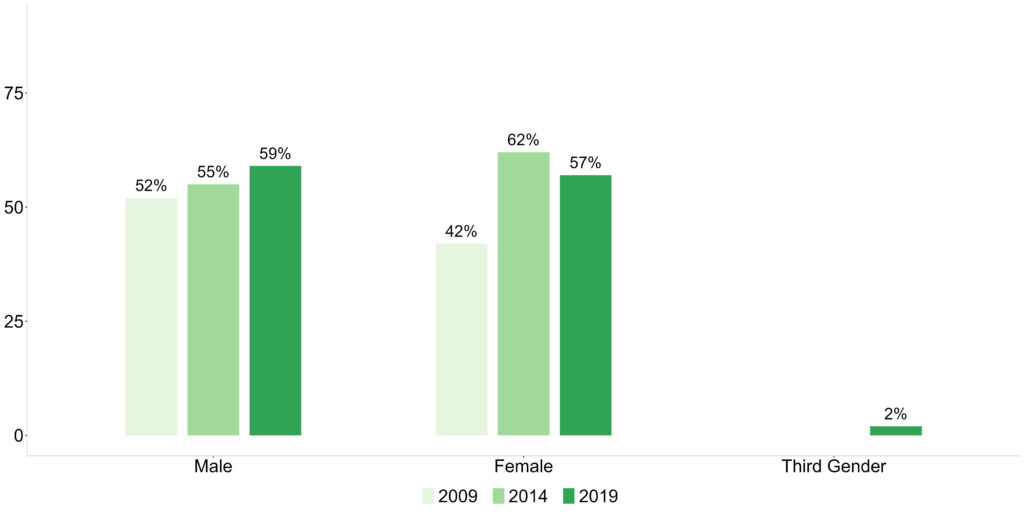
Gender Wise Voter Turnout
The total count of electors in 2019 was 19,33,358 out of which 11,27,783 chose to cast their ballot in the parliamentary elections. Out of 10,50,303 male electors, only 59% voted which is 6,20,288 male voters in real numbers. On the other hand, the voter turnout for females stood at 57% which translates to 5,06,493 voters out of a total of 8,82,972 female electors in real number.
In 2017, transgender people were included as a separate category of the third gender in electoral rolls. There were 83 electors belonging to the third gender category in the parliamentary constituency during the 2019 elections. And 2 of them exercised the newly granted constitutional right to vote and thus their turnout stood at 2%.
Gender-Wise Literacy Rate
We are taking a peek at the gender-wise literacy rate of the Jalaun district, Kanpur Dehat district and Jhansi district which are part of the Jalaun parliamentary constituency as literacy is considered an essential indicator of the socioeconomic development of the region.
Jalaun District
The 2011 census of India has pegged the overall literacy rate of the Jalaun district at 64%. Gender-wise, the male literacy rate in the district is 72% whereas, for females, the literacy rate stands at 54%.


Gender Wise Literacy Rate
Kanpur Dehat District
The overall literacy rate of the district is 65%. However, when it comes to gender, the literacy rate for males in the district stands at 72% while the female literacy rate is 57%.
Jhansi District
The Jhansi district’s overall literacy rate is 65%. In terms of gender, the literacy rate for males stands at 74% whereas it is 55% for females.
Stay updated on the electoral statistics for parliamentary constituencies and the changing dynamics on Meradesh App. Available on Appstore and Play Store.
Reach your constituents, gain insights into their motivations, and build campaigns based on data-driven strategies with the Meradesh Platform.
Data Source – Meradesh.org
